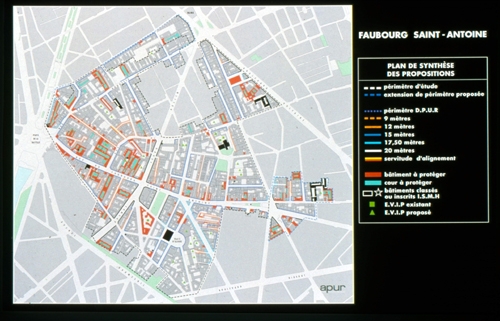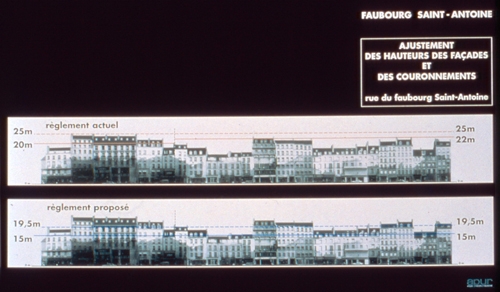| Protection and Comprehensive Renewal of Faubourg Saint-Antoine, Paris |
| Author:Dr. Roland LIN Chih-Hung PublishDate:2011-10-21 Hits:6277 |
The planning and development of famous historical and cultural cities should pay due respect to the city's history and current status, protect its structure and texture and balance the relationship between conservation and utilization and that between inheritance and development. What's more important is that it should intensify the protection of the city's history and culture. How to effectively highlight the city's rich cultural heritage while realizing overall protection has now become the greatest challenge in the conservation of historical cities. Conservation of historical cities is not to simply copy or restore cultural relics; it should also pay attention to intangible cultural heritage such as oral heritage, performing arts, social customs, etiquette, festivals and traditional handicraft. Renewal plan of traditional block in the city of Paris -- Faubourg Saint-Antoine Since the time of Roman Empire, Faubourg Saint-Antoine has been the only path that leads to the city east. As a must path for the French kings in Middle Ages to shuttle between Paris and Château de Vincennes, this block has a unique meaning in the city texture. Meanwhile, it is near the river Seine, which gives it the convenience to transport timbers by water, naturally this area became a manufacturing and supplying hub for fine wooden furniture made for the royal families. Later it became the handicraft center in the city of Paris. Around the time of French Revolution, it was once the camp for protests organized by middle and lower-class workers against the rulers. In the early 1990s, the new and old buildings in Faubourg Saint-Antoine formed a sharp contrast and the newly-widened roads led to the disappearance of the former square vision. How the city of Paris has sorted its complicated urban texture and rehabilitated its cultural identity is a successful case worth to study. 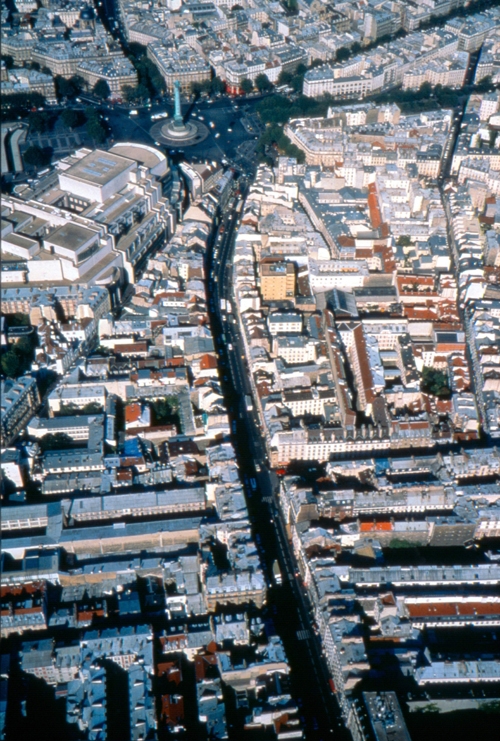 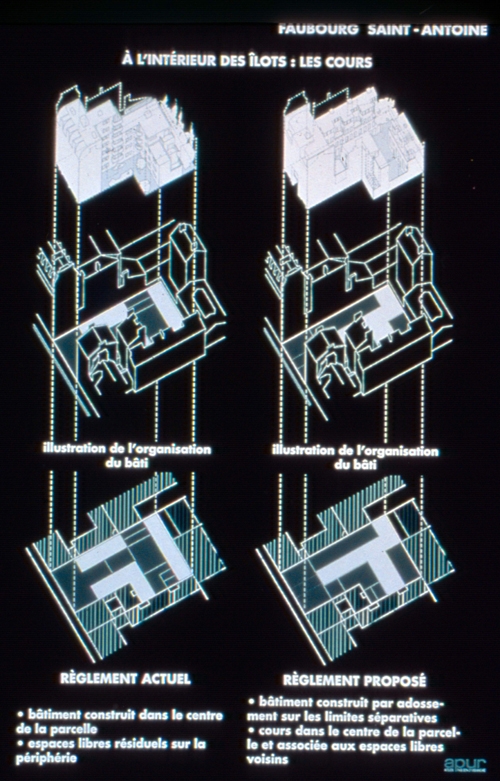 Thoughts on historical buildings and urban development Stressing the overall image of the urban development and keeping the city's cultural and natural identity have been the targets and methods of urban renewal. However, we have to be cautious not to impose upon the new buildings a traditional look that does not fit in with the "urban texture". Instead of dotting the new buildings with traditional elements, we need to pay attention to the conservation and renewal of many buildings and space that are considered to have an urban value or historical and cultural meanings, especially those that are used to constitute the key elements of the "urban texture". The aforementioned buildings and space include ordinary small buildings, small groups of premises (small communities and towns), space for public activities and transitional space for mixed uses. While keeping the urban texture intact, we can comprehensively extend the existing roads and the structure of public space, redesign the street corridor structure, redesign the proportion of road width to the building height and set up new buildings and space outside of the protected zone in harmony with the existing neighboring old towns or historic area to facilitate urban and economic development and meet modern needs. Other than the need for urban development, in-depth research on social and human revolution should also be conducted to make the land planning fit into the urban texture and structure. When making new urban development policies, we should emphasize the harmony of new and old elements and the protection of historical relics and historic urban landscapes. Land planning, urban planning and master plans for urban renewal should also reflect this concept. Protection and comprehensive renewal of Faubourg Saint-Antoine, Paris - a case study With the advancement of protection of relics and antiques, people started to realize that other than magnificent castles and mansions, other forms of historical remains were also part of the collective memory. Factories, historic urban landscape, villages, farmhouses and public space, any space that has special historical and cultural textures is all possible cultural relics worth protecting. It is the reason that Faubourg Saint-Antoine was paid special attention to. The Faubourg Saint-Antoine block, was neither a special single building monument nor a special protected area within Paris. The objects and elements the city of Paris intended to protect were its spatial layout - the long and narrow courtyards and paths, the high towering chimneys, the 18th century streets and workshop-floors, and the exquisite wooden furniture creative industry.
A proposal to protect Faubourg Saint-Antoine In the early 1990s, the new and old buildings in Faubourg Saint-Antoine formed a sharp contrast, resulting in the disappearance of former historic urban landscape and urban texture. The original and unique public courtyards and passages gradually became segmented and broken residual space due to the pursuit of maximum profit. Under the advocacy of enthusiasts, professional teams and people's representatives, the council of Paris city passed the proposal for the protection of traditional neighborhood in Jan. 1994. After identifying the programme boundary and the scope, it agreed to partially modify land-use regulations special for this area.The proposal has three goals: 1. To achieve balance between new buildings and old neighborhood. 2. To continue the tradition of a mixed block for both residential and commercial purposes. 3. Keep a record and inventory of all the historical and cultural elements of the streets, courtyards, backyards and single buildings for protection purpose as well as urban development need. Protection measures of Faubourg Saint-Antoine The conservation of Faubourg Saint-Antoine was carried out following the 4 measures below: 1. Modification of the land-use regulations in the block - study and draft a set of laws and regulations special for Faubourg Saint-Antoine to protect historic urban landscape and to keep a balance between residential and commercial function and use.
2. Compilation of public space guidelines – any public space improvement projects within the boundary and scope of this block should follow the conservation guidelines in planning and construction to make sure that the new or restored streets, pedestrians and small squares exist in harmony with the protected traditional neighborhood. 3. Joint development of specific measures to conserve and develop the handicraft industry and commercial activities in the traditional block by the city of Paris and Paris Industry and Commerce Protection and Promotion Foundation. Through this case, we understand that the city of Paris actively pushed forward the conservation of traditional neighborhoods and comprehensive urban renewal; meanwhile, it also took into consideration the development of new cultural and recreational industries as well as residential need. It mobilized resources from all directions-the government, the citizen, academic circle and the construction industry to create an ideal living environment for its citizens. Although the time when the courtyard was the hub for traditional industries will never be revived, this public space now once again offers an opportunity for the protection of traditional block and comprehensive urban renewal.
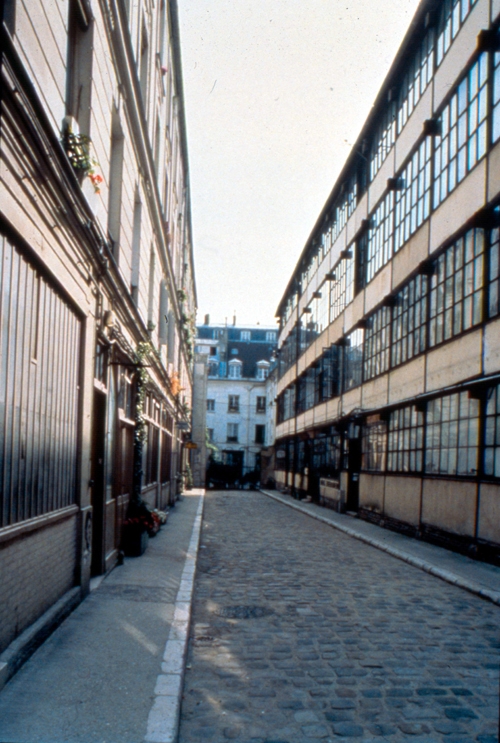 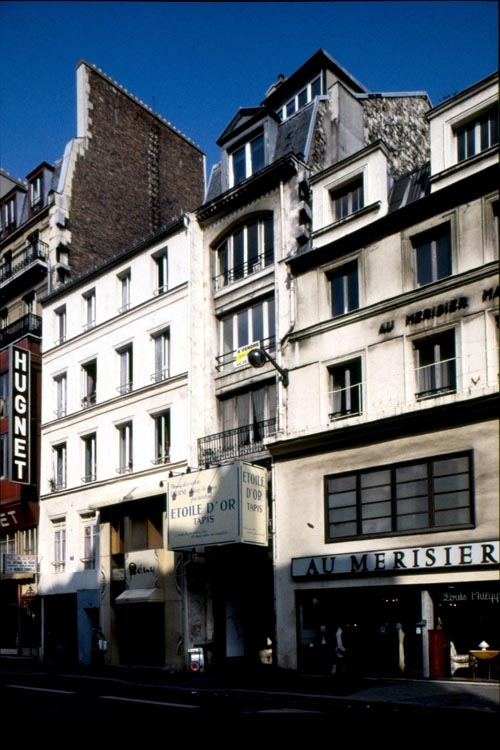 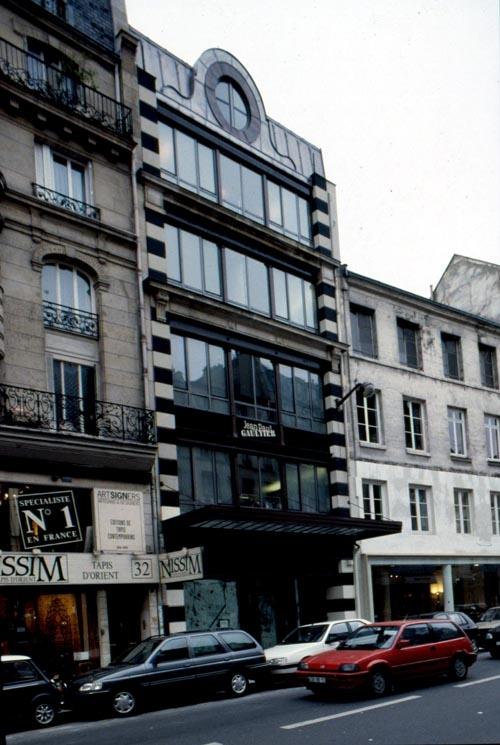 |
- News | WHITRAP Shanghai and CNR-ISPC bilateral meeting
- News | WHITRAP meets Cité de l’Architecture et du Patrimoine
- WHITRAP Hosting "Workshop on Preliminary Assessment for National Focal Points of the Asia Region" in Chengdu
- WHITRAP Shanghai meets UNESCO
- INTERNATIONAL CONFERENCE PRELIMINARY ANNOUNCEMENT & CALL FOR PAPERS
- Observation of the 46th Session of the World Heritage Committee
Copyright © 2009-2012 World Heritage Institute of Training and Research-Asia and Pacific (shanghai)


